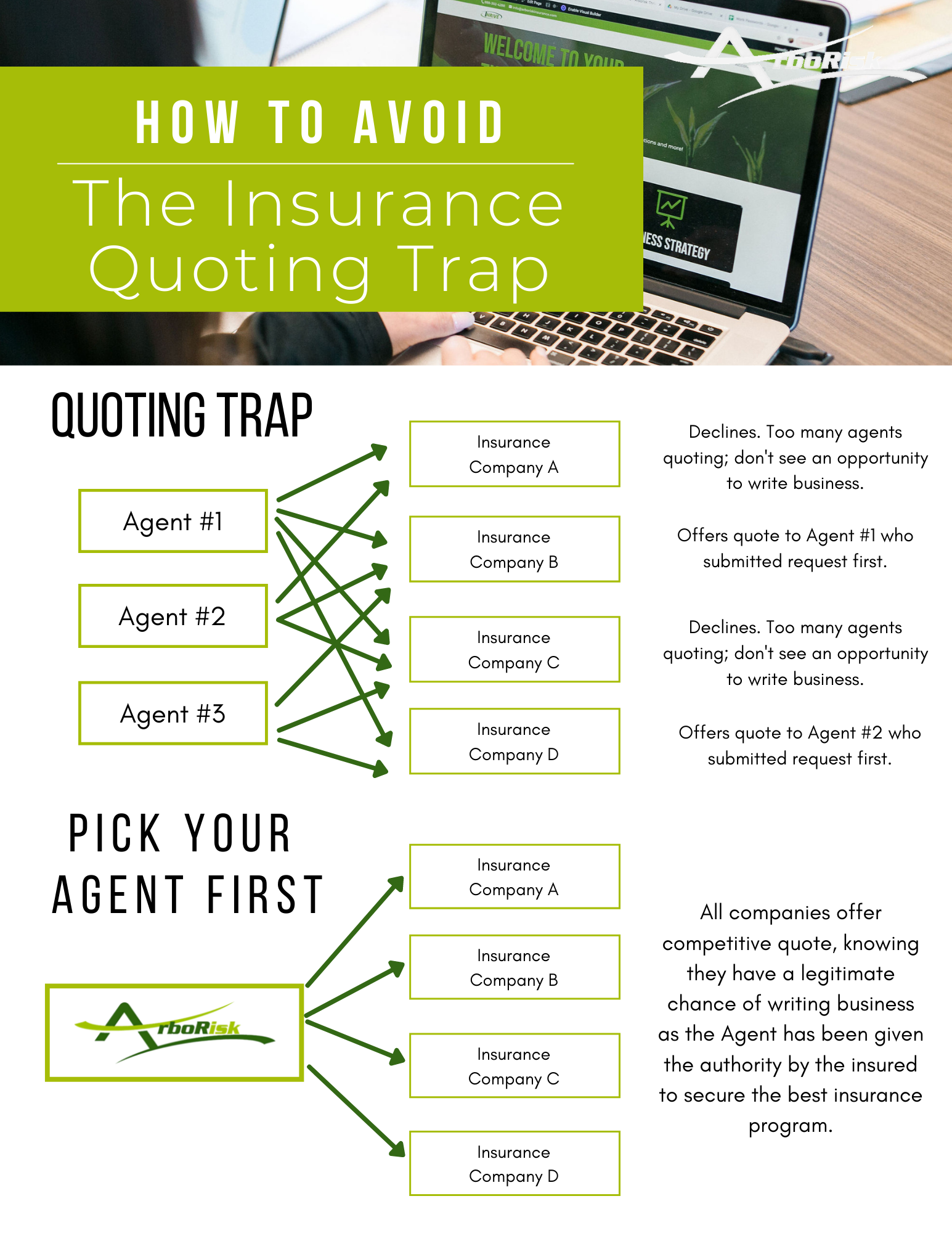Avoid the Insurance Quoting Trap
Avoid The Insurance Quoting Trap
By Eric Petersen, CIC
Shopping for insurance coverage can be an exhausting task. Starting with your phone ringing off the hook three to four months before your renewal from agents trying to “quote” your policy, to gathering equipment lists and insurance loss runs to listening to final presentations for hours on end, the traditional way to get an insurance quote will leave you frustrated and worn out. And worst of all, at the end of it, you probably will stay with your current agent and insurance company because most quotes will be very similar in price anyway. That my friend, is what I call, the Quoting Trap.
So how do you avoid the Quoting Trap yet still secure the best possible insurance program for your business? You must first start with an understanding of the following facts about the current insurance industry.
Fact #1 – Not Many Options
Unfortunately, there are only a handful of insurance companies that truly have the proper knowledge of the tree care industry to offer the best protection at the lowest price. Because of this you will see agents scramble to submit your information to those insurance companies. The first agent that submits the account is the one that has authority to get the quote from them.
Fact #2 – Prove it
To offer the lowest price, insurance companies need proof of why you will not have an accident or injury. This typically means providing loss runs from your prior policies to the quoting insurance company to show what your incident history has been and answering a few questions regarding your safety program.
Fact #3 – Not all Agencies are Created Equal
I’m sure you are sick of explaining how an arborist is much more than a tree trimmer to insurance agents looking to give you a quote. Because the vast majority of insurance agencies do not specialize in working with tree services, their knowledge of your industry is very basic and therefore they feel their only value is to place coverage and do the minimal amount of work on your account so that you renew your coverage the next year. The good news is that there are agencies that have dedicated themselves to the tree care industry and offer many more services than just insurance policy issuance to help your business.
Considering the above facts, when you allow a few agents to earn your business by giving them the minimal information needed to get a quote, you shortchange yourself. You create a race to see which agent can get the submission to the insurance companies the quickest versus actually showing the insurance company how you will be a profitable account. Many agents skip gathering vital information about your company that would dramatically improve your chances of lowering the insurance cost just so they can be the first agent in. On top of it all, you have done nothing to guarantee that the fastest agent is actually the best agent that can help you well beyond insurance.
The Solution to the Quoting Trap is to select the best agent for your company first and have them find you the best possible insurance program. I know what you are thinking, “Wait, that’s not a competitive situation!” But it is. Instead of asking the agencies to compete for your business based on who can submit the information to the insurance companies the fastest, you are asking them to compete on a much tougher level; “What are you going to do for me?”
It is then the agent of your choice that submits your information to all of the available insurance companies for quotes on your behalf. It is remarkable how much more effective at securing lower insurance premiums it is when only one agent is submitting for quotes. I recently was asked to quote a policy for a tree care service. Since I knew they were using other agents to get quotes, I asked my insurance companies if they have received a submission for this account before. Their response was astounding, “This may be one of the most shopped accounts out there. This year we received it from one agency and had calls from another. Last year it came in from 2 different agencies than this year.” Guess what? The insurance company did not want to spend time quoting this account unless they knew they had a real opportunity to win.
If you need help with your insurance or are interested in a FREE coverage review, contact ArboRisk. Our Thrive Risk Management program, specifically our New Heights Package, can help address some of these pain points and help steer your insurance in the right direction!
The graphic below depicts the Quoting Trap:






Recent Comments